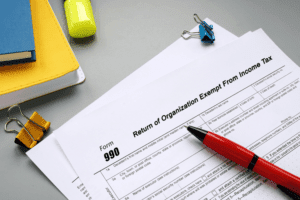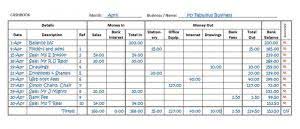Blog
Shareholders Equity Definition, Formula, Calculate

(Registration is usually automatic when a stock is purchased.) The ex-dividend date is the date by which an investor must have held the shares to receive the dividend. The payable date is the date on which the dividend is mailed out or deposited to clients’ accounts. Changes in balance sheet accounts are also used to calculate cash flow in the cash flow statement.
c. Other Components of Shareholders’ Equity
There are many questions that arise when running your business, especially around managing finances and accounting matters. Reclassification adjustments occur when items previously recorded in OCI become realized and are shifted to net income. This transfer is necessary to prevent double counting when an item recognized in OCI subsequently affects net income. For example, if an unrealized gain on available-for-sale securities recognized in OCI is realized through the sale of the https://gravityrepairs.com/virtual-bookkeeping-services-miami/ securities, it is then reclassified from AOCI and included in net income. It helps in determining the performance level of the company through calculations of several financial ratios. It also shows the liquid or solvent state of the company, including its efficiency level.

Trump RX plan a ‘win-win’ for investors, drug costs, and US jobs: Jeff Sica
- In both cases, the external party aims to assess the financial health of a company, its creditworthiness, and whether it will be able to repay its short-term debts.
- Legally, corporations must have a credit balance in Retained Earnings in order to declare a dividend.
- This figure includes the par value of common stock as well as the par value of any preferred shares the company has sold.
- Excluding these transactions, the major source of change in a company’s equity is retained earnings, which are a component of comprehensive income.
- The stock is publicly traded and recent trades have been at $35 per share.
- In general, a number below 50% indicates a company that is heavily leveraged.
They do not impact the income statement because the value of retained earnings on the income statement is reported after the dividends have been paid out. The company’s balance sheet size is reduced because its assets and equity are reduced by the total amount paid out to shareholders in dividend payments. The above formula sums the retained earnings of the business and the share capital and subtracts the treasury shares.

Outstanding shares

Par value for the stock is the stated stock price in a Bookkeeping for Chiropractors company’s charter. These are percentages of the net earnings that were not distributed as dividends to shareholders within the expected time. The balance sheet equation follows the foundational accounting principle of ‘double entry.
Reclassification Adjustments from OCI to Net Income and Their Impact on Equity
Dividends are analogous to draws/withdrawals by the owner of a sole proprietorship. The draws and dividends are not expenses and will not appear on the income statements. To illustrate, assume that the organizers of a new corporation need to issue 1,000 shares of common stock to get their corporation up and running. As what goes into stockholders equity a result, they decide that their articles of incorporation should authorize 100,000 shares of common stock, even though only 1,000 shares will be issued at the time that the corporation is formed.
Why is stockholders’ equity important to investors?
After a 2-for-1 stock split, the same stockholder still owns just 1% of the corporation (2,000 ÷ 200,000). Before the split, 1,000 shares at $80 each totaled $80,000; after the split, 2,000 shares at $40 each still totals $80,000. Recall that the corporation’s cost to purchase those shares at an earlier date was $20 per share.

The long-term asset construction in progress accumulates a company’s costs of constructing new buildings, additions, equipment, etc. Each project’s costs are accumulated separately and will be transferred to the appropriate property, plant, or equipment account when the asset is placed into service. This document also helps financial analysts and shareholders make better decisions by showing how the company’s management handles its profits. By the end, you’ll have a clear understanding of how this stockholders’ equity statement works, with an example to guide you. Total liabilities represent the sum of current and non-current liabilities. Current liabilities are obligations that are due or will become payable in the next 12 months.

